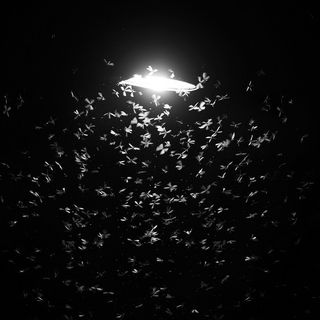The population of the cane toad, a highly poisonous species that has been known to disrupt ecosystems, has run amok in Australia. This has led to cane tadpoles evolving to consume younger hatchlings, according to new research published on 23rd August in PNAS.
Cane toads are disastrous to the wildlife that consume them because of their high toxicity. Marsupials like the northern quolls are endangered almost solely as a consequence of trying to eat the toads and succumbing to their toxins. As a result, with fewer predators evolutionarily equipped to deal with the poison, the new study has found that these toads have exploded in numbers so much that natural selection has begun to favor cannibalistic tadpoles.
Strong competition in dense populations drives strategies to outcompete or eliminate competitors within the same species.
“Cannibalism is one such strategy; by killing and consuming their intraspecific competitors, cannibals enhance their own performance,” the researchers explain.
The toads are not native inhabitants of Australia but were brought to Queensland from South America 86 years ago to control the cane beetle population for the benefit of the sugarcane industry. While there were only about 102 toads brought in at first, the toad population presently stands at 200 million.
Related on The Swaddle:
Male Praying Mantises Have Evolved to Escape Sexual Cannibalism By Female Partners
Researchers have previously observed cannibalism in other species, but what is significant about this finding is the extraordinarily short time it has taken, in evolutionary terms, to manifest in the toads. Having occurred in less than 100 years, scientists say that it is akin to seeing evolution “develop in front of their eyes,” according to Volker Rudolf, a community ecologist from Rice University, Texas.
Cane toads have always been a little cannibalistic even in their native habitats, but researchers have hypothesized — and now confirmed — that the population boom in Australia might have augmented these tendencies. Researchers from the University of Sydney ran more than 500 trials comparing the Australian toads with their South American cousins.
In the experiment, researchers offered both groups of tadpoles two options: an empty container, and a container with a newborn hatchling in it. The results were disturbing: the Australian group was 30 percent more likely to choose the hatchling container, and 2.5 times more likely to eat the hatchling as compared to the South American group.
This finding has led to the further discovery of yet another evolutionary change in the tadpoles, wherein their vulnerable hatchling stage is considerably shortened.
“In response, these toads have also evolved multiple strategies for reducing the duration of the vulnerable period, indicating an evolutionary arms race between the cannibalistic tadpole stage and the vulnerable egg and hatchling stages in invaded habitats,” the paper states.
In other words, the Australian cane toad evolved a defense strategy against its own evolved cannibalism strategy.
“These toads have gotten to the point where their own worst enemy is themselves,” Jayna DeVore, a co-author of the study, told Nature.




